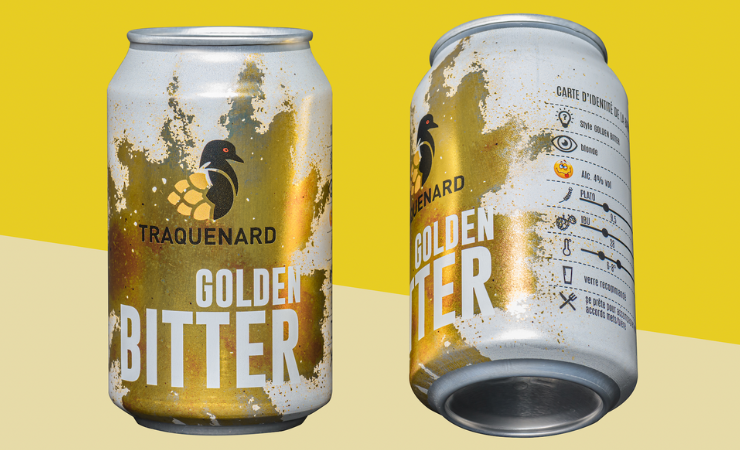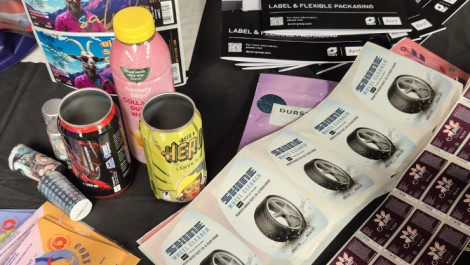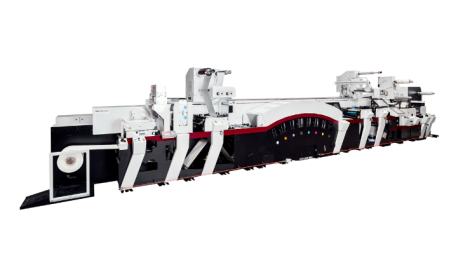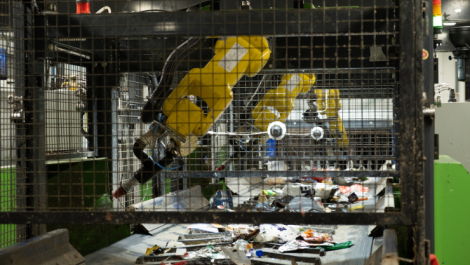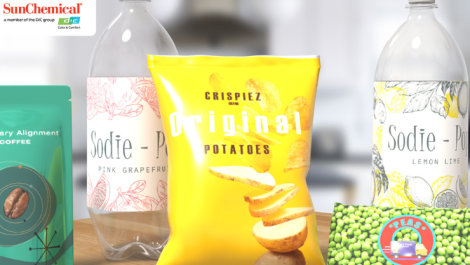Labels and packaging reflect the calibre of a product, making it essential brands of all size get them right, although this is particularly true for craft and artisan producers. Taylor Sinclair reports.
Standing out on the shelf can be considered just as crucial as the quality of the product inside of a bottle or can, because without the correct visual prominence a customer may not even be aware of its existence. That’s why the worth of having vibrant and innovative packaging, often achieved through digital printing, is judged vital to smaller brands providing craft and artisan products for best reflecting the calibre of the product inside.
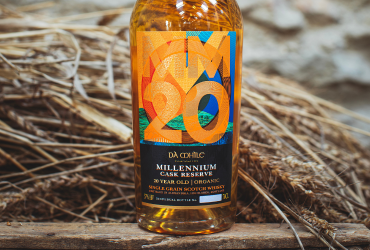
Dà Mhìle Distillery’s millennium cask reserve MM20 label
Dà Mhìle, a Welsh distillery, has recently launched a millennium cask reserve MM20, a 20-year-old single-grain scotch whisky. Working in collaboration with The Label Makers, a new visual and intricate label was created. Explained by The Label Makers, research and development
within the digital colour gamut for the MM20 reserve label was carried out to set the product apart from others on the shelf. The addition of gold foiling and high-build spot varnish detailing were handled by the company, Seven Seren Design. Dà Mhìle Distillery’s manager Jenny McClelland comments, ‘It’s [MM20] a high-priced product and is always going to be at the top end of our scale, but it has been very popular. We have had a lot of positive feedback from our customers on the label and the packaging design.’
Regarding the printer’s view on the importance of labelling for a company such as Dà Mhìle, Craig Goodman, business development manager of The Label Makers remarks, ‘This is of huge importance, one of which can be overlooked sometimes. There is so much to consider here, from the ever-increasing competition for shelf space in a retailer but also the online element as well. The packaging is one of the main elements that can draw the attention of a consumer away from a competitor’s product, but also it’s a way to help tell your story, your ethos and values. It also doesn’t have to cost the earth, a change to a material, a quirky shape or the use of a colour palette that doesn’t fit the traditional norm can all work wonders.’
Telling a story
The value of ‘storytelling’, reflecting a company and its product’s characteristics, is judged an ‘essential’ aspect when creating a label. Australia-based Husk Farm Distillery’s aim was to create ‘a premium, farm-to-bottle agricole rum with a unique Australian expression.’ As described by the company, the Husk story is now embodied in an ergonomic bottle that tells a story on every label, printed by MCC on a premium uncoated paper labelstock that has a felt-like textured feel. This has also been implemented on its Signature Cultivated Rum range, which features gold hot foil instead of copper, high build screen, plus the additional embellishments of embossing and a clear holographic hot foil to differentiate this product in the range.
Representing the company’s values and story was paramount, highlighted further by Harriet Messenger, general manager of marketing and hospitality at Husk. She explains, ‘Our fans love the new labels! They pop off the shelves and tell the story of each product and our provenance so beautifully. As Australia’s only farm-to-bottle distillery, Husk Rum is all about a connection to land, and our new labels highlight this land story front and centre.’
When creating a ‘story’ within packaging, a beneficial symbiotic relationship between both companies to complement the targets within the project is important. Speaking on behalf of The Label Makers, Mr Goodman said, ‘First of all we listen, we probe around what they want to achieve, we then discuss what finishes can be applied with the designs or what materials would work best for their product.’ Ms McClelland referred to Dà Mhìle’s collaboration stating, ‘Additionally, their [The Label Makers] proactive approach to presenting problems with solutions has been pivotal in the seamless execution of each project.’ As connoted by both sides of this label collaboration, a reciprocal relationship is best in achieving the goals of storytelling and underlining the values of a company within its labels.
A memorable experience
Following on from storytelling, an experience within labels and packaging is pivotal in creating a lasting memory for a customer. NOMOQ’s first UK customer overall was Brulo. James Brown, co-founder of the non-alcoholic beer brewer, says, ‘Design plays a key role in the experience of craft beer and that’s no different for us just because our beers are non-alcoholic.’ Jeff Gill, Antalis’ digital business partner re-enforces Mr Brown’s view stating, ‘The unboxing experience plays a major role in e-commerce packaging and labelling also plays a pivotal role here.’ Supporting both views, Peter Stein, CEO of NOMOQ, adds, ‘I think it’s crucial for new brands when trying to grow a business to get these first-time consumers who then have a great experience with your drink while also remembering the design which will encourage them to re-buy the product.’
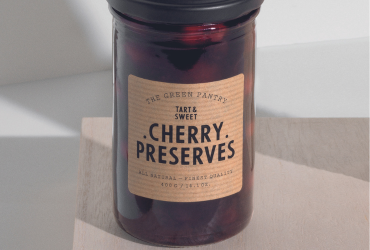
Antalis’ brown kraft paper provides a ‘natural and vintage look’
Mr Gill also expresses the value of the correct material in creating an experience for a customer. ‘Quality substrates with a natural feel and tangible sustainable benefits are very popular, for example our Raflatac Kraft Brown 70, Classic Laser HS-FSC, Naturl HS-FSC Recycled or our synthetic range including PET or PE sheets. Digital Kraft Brown is a standard-ribbed, machine-glazed, brown kraft paper. Its authentic, natural and vintage look makes it very prevalent with clients especially for creating stylish wine and beverage labelling.’ All prior opinions indicate how trying to maintain a consumer’s consistent sale is problematic and only through creating an ‘experience’ which lasts in the mind to the customer, will a product stand out.
An experience within packaging can be achieved through digital printing. ‘Of course, you need to have a great liquid inside the can/bottle, but you need to trigger the consumer to grab that drink from the shelf. I think that’s where we can really help out, we can provide unlimited colours, add varnishing and tactile effects on the cans,’ says Mr Stein. ‘We want to provide the maximum flexibility for our customers; that’s what we stand for, which digital printing enables. What we have seen more with digital printing is we can supply more versatile designs; we can make creative designs including photo-realism which was difficult before. That’s why digital printing on cans is the future for small batches.’
BrewDog took advantage of NOMOQ’s method of digitally printing on cans, and became the first customer of NOMOQ’s confirmed UK production site in Leamington Spa in September 2023. Alan Owen, head of procurement at BrewDog, explained the ability to produce high-quality branding for small batches was an opportunity that the company had to ‘react quickly’ on, further adding, ‘We were blown away by NOMOQ’s quality and creativity which aligned with our brand values.’
As alluded to by Mr Stein, the use of digital printing is fundamental to achieving unique and innovative labels for smaller brands with its ability to print in low-volume batches, a viewpoint agreed with by Simon Buswell, sales and marketing director, Eco Flexibles. He says, ‘Challenger brands are making big strides and continue to grow their presence in the market; they are outgrowing standard brands in the UK. That type of customer can’t have too much stock, often launch quickly onto the market, and want to have lots of different packaging designs on the shelf. This suits digital perfectly and is a market we are seeking to address.’ Eco Flexibles has recently moved to a 40,000sqft production site in Northampton and has installed a Fujifilm Jet Press FP790 digital water-based inkjet press, the first outside of Japan, to aid the company’s progression into creating unique and effective labelling and packaging.
When working with products in small batches, a reflective outlook must be taken on all aspects of design as well as the consideration of the suppliers needs to ensure competition with larger brands. Mr Gill comments, ‘A label substrate and design must be fit for purpose. When choosing a substrate, aspects such as adhesion, outdoor labelling, resistance to water, oil and chemicals must be considered at the design and production stage.’ Other aspects to consider include cost. Mr Goodman adds, ‘Budget comes into all off course, so it can’t be something you’re afraid to discuss, but we will also look to maximise special embellishments.’ All obstacles must be hurdled to ensure competition with larger brands.
In conclusion, digital printing offers a comprehensive option to meet companies’ challenging needs of producing in small batches. This method best alleviates issues, of producing in low-volume and high quality, through its ability to create unique, innovative and bespoke designs which are best able to tell a ‘story’ for a brand’s goods. As indicated throughout, a ‘message’ behind labels, specifically for craft and artisan products, is imperative in encouraging a customer to choose its product over another – again a situation best dealt with through digital printing.
This feature article was first published in the March/April issue of Digital Labels & Packaging, which you can read online here; register here to receive future issues of the magazine

